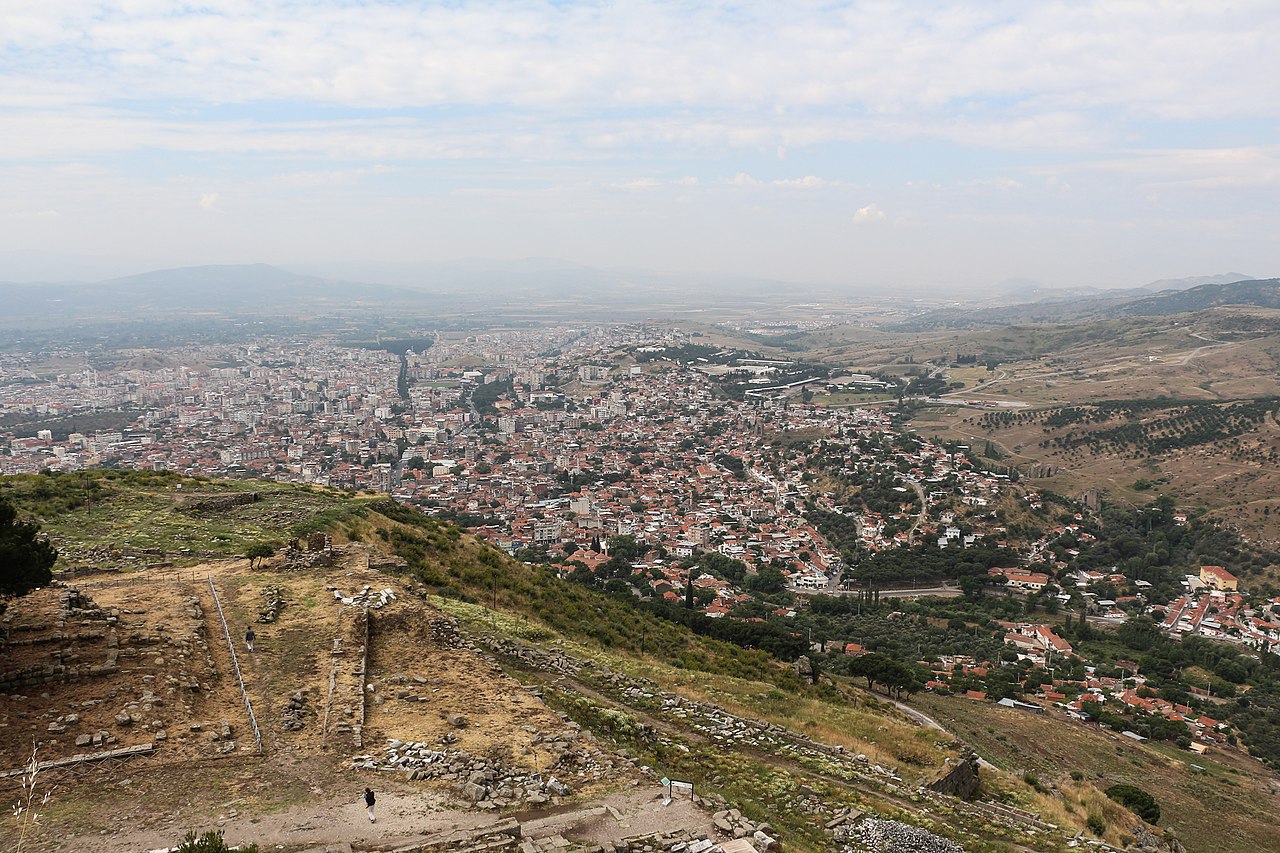PERGAMON (Pergamon)
PERGAMON (Pergamon)
 With approx. 55 thousand. residents, Bergama is situated in the picturesque valley of the Bakir River, above which rises a hill with the ruins of the ancient city of Pergamon, the former capital of the mighty state of Attalid (III – 2nd century. p.n.e.). It is peaceful today, agricultural city, a bit out of the way, which during the season many tourists visit, attracted by the remains of a very important ancient city. Here at last was also one of the seven Churches mentioned in the Apocalypse of St.. Jana.
With approx. 55 thousand. residents, Bergama is situated in the picturesque valley of the Bakir River, above which rises a hill with the ruins of the ancient city of Pergamon, the former capital of the mighty state of Attalid (III – 2nd century. p.n.e.). It is peaceful today, agricultural city, a bit out of the way, which during the season many tourists visit, attracted by the remains of a very important ancient city. Here at last was also one of the seven Churches mentioned in the Apocalypse of St.. Jana.
History
The excavations carried out on the hill proved, that this place was already inhabited by immigrants from Hellas in the 8th century. p.n.e. There are many myths about the creation of the city. The first, however, historical mention of this place is a passage from Xenophon's Anabasis, where he describes the retreat 10 thousand. Of the Greeks after the defeat, they suffered near Kunaksa (in ancient Babylonia) led by Cyrus the Persian king. The soldiers managed to reach the Greek colony Trapezunt (today's Trabzon) located on the Black Sea. Later, as part of an organized Spartan expedition to Persia, they joined with the rebels in the vicinity of Pergamon. Subsequently, the city went down in history as the home of Heracles (not to be confused with the mythical hero), son of Alexander the Great and a Persian princess. He was killed on the orders of Antipater, one of the diadochi (immediate successors) Aleksandra. About 300 r. p.n.e. Pergamon, as well as the whole of Asia Minor, he was under the rule of Lisa-Mach, another diadocha who has so far ruled in Thrace.
After the death of Lysimachus, the current governor proclaimed himself the ruler of Pergamon – Filetajros. During his reign, the city began to flourish rapidly and lush, for he did not spare Pergamon his talents. Filetajros died in 263 r. p.n.e., having previously handed over the power over the much enlarged lands of the state to his nephew (which he adopted) to Eumenes. This led to the complete liberation of Pergamon from the influence of other countries, and most of all the kingdom of the Seleucids (stretching from Cilicia through Syria to Babylonia) once founded by one of Alexander's successors, Seleucus I Nikatora. The Seleucids tried to conquer the lands of Pergamon, but the lost battle with the armies of Eumenes at Sar-des resulted in the abandonment of this intention. The Pergamon state slowly expanded its borders during the reign of Eumenes' successor, Attalus I (241 – 197 p.n.e.), who began to use the royal title. Syn Attalosa, Eumenes II (zm. 159 r. p.n.e.), just like my father pursued a pro-Roman policy, which resulted in the growth of the power of Pergamon. For when the Roman commander Scipio Africanus moved with his army to the lands of the Seleucids, joined forces with Eumenes and defeated Antiochus III (the famous Hannibal stayed with him) under Magnesia in 190 r. p.n.e. As a result of the defeat, Antiochus had to relinquish all the lands north of the Taurus Mountains, which largely fell to Eumenes II. As a result, the territory of the kingdom grew enormously, extending almost all of western Anatolia from the Sea of Marmara (except the kingdom of Bithynia) to the Mediterranean Sea.
During the reign of Eumenes II, Pergamon became one of the most important cultural and scientific centers in the contemporary world. It was then that the famous Pergamon Library and many other magnificent sacred buildings were built, and lay people. Brother and successor of Eumenes, Attalos II (159 – 138 p.n.e.), he continued the policy pursued by his father and grandfather, that is, he focused mainly on an alliance with Rome. During his reign, Pergamon fought against the kingdom of the Bittersweet, scoring several victories. Attalos became famous primarily as a great builder and patron of the arts. His successor, Attalos III, did not go down in history with anything special except this, that at the end of his life he bequeathed the Pergamon kingdom to Rome. Thus, Pergamon joined numerous Roman provinces. During these times, Pergamon became an important trading center, and its population has grown significantly, reaching its peak in the 2nd century. (ok. 140 thousand. residents). It was then that one of the most important buildings of Pergamon was built – asclepias, that is, the center of medical knowledge. The city was still developing until the 3rd century., being the administrative center, commercial and cultural, but it was already twilight. In the early Christian times, Pergamon was the seat of a bishop, and then, during the Arab and Turkish invasions, it was destroyed many times. Even as a small town, he experienced it – until Orhan Gazi won it (1336) – for the alternation of the Seljuk siege, crusaders, Byzantines and Ottomans. The Turks called the town Bergama and it has survived to this day under this name.